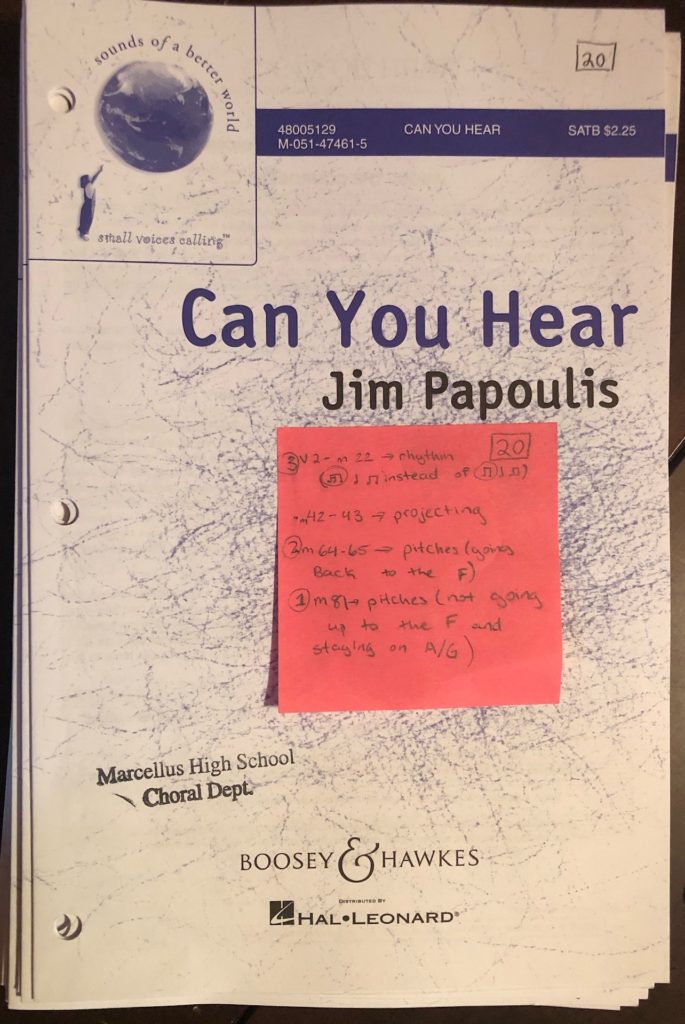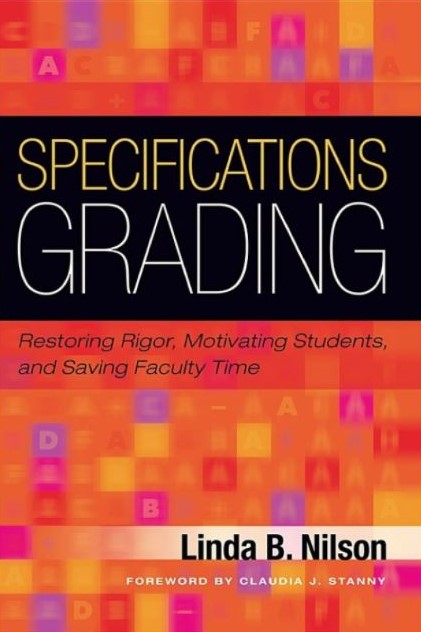
I wish I could take credit for labeling and using the term AutoSave in class, but that honor goes to one of my students. It all happened one day during voice lessons as I was asking my students to write in performing and learning strategies into their music. I was trying to impress upon them the importance of marking their music and keeping track of what and where they individually needed to work on.
That’s when one of my sophomore tenors spoke up and said, “it’s kinda like AutoSave.” I agreed and added that in the same way computers have a function to save automatically, we as musicians need to learn how to process and “save” the skills and understandings we achieve while practicing. The reality is that if our students participate in class but do not actively take responsibility and own their music-making, they are not learning. They are mimicking. If our choir members do not think independently and learn to “AutoSave” their conceptual and musical understandings, they are basically starting over each time they come to rehearsals.
As professional musicians, we know our craft and understand the value of honing our musical skills. Our students? Not so much. Aside from a few highly motivated students, a majority of my high school choir members come to class and expect to be told what to do and how to think. But if we are honest, it really is not their fault. In many classes – including ours if we are not careful – our students are taught and trained to be consumers and not producers of learning.
Independence-Centered Learning
To help our students become producers of their learning, we need to hold each member accountable for 1) their personal musical growth, 2) their contributions to the ensemble, and 3) the overall success of the choir. In addition, students must be taught the skills and strategies needed to assess a task independently, problem solve, implement mediation, and evaluate their efforts. This Independence-Centered Learning approach is the foundation of the Agile Development Instructional FrameworkAgile Development Instructional Framework (ADIF). For our students to enjoy a lifetime of musical enjoyment and participation, they must become aware of and responsible for their learning.
What’s Your Top Three?
To help my students become more musically responsible and independent, I created an assignment called Top Three. This activity asks the students to identify their Top Three areas of concern while working through the choirs’ rep. The Top Three assignment can be used anytime throughout the learning process, from the early stages of introducing and woodshedding a song to the performance.
Set-up for Success
To be successful with any activity or assignment, you must set the students up for success. This is accomplished by modeling, practicing, and having the students experience the rewards of understanding and mastering a specific concept or skill. For example, before I introduced the Top Three assignment to my students, I made sure they had many successful experiences processing, assessing, and communicating the choirs’ learning during rehearsals.

Currently, we are using 3 x 3 sticky notes for our Top Three assignment – in the past, I have also used a half-sheet handout and Google Forms. The best part of this activity is that you can use the information presented by the students in a variety of ways. For example, you can 1) grade each student based on their responses (see Specs Grading below), 2) have the students collaborate and create a Top Three list for their section, or 3) use the assignment as a quick assessment to determine the students’ current knowledge and skill levels. You can also adapt and modify this assignment to fit your rehearsal needs, whether you take two minutes during a rehearsal, use Top Three as an exit ticket, or use the assignment for your sub plans.
Instructional Top Three
Not only does the Top Three activity support the students’ understanding of individual and ensemble responsibility, but it is also an excellent resource for directors as we adjust and plan for future instruction. As I graded the choir’s recent Top Three assignment for Can You Hear, the following three themes and teaching modifications became apparent.
Student responses:
1. My students had good general observations, but many did not include supporting evidence in their statements.
2. Several comments were general in nature, such as “measure 85 – end” or noted following the score, such as pointing out the key change, time signature change, and repeats.
3. Most student comments focused on basic music reading skills, such as tricky rhythms and pitches.
My adjustments:
1. I will write more precise instructions for the assignment specs (see below).
2. I will make a greater effort to have the students mark their specific areas of concern during rehearsals.
3. I will challenge and encourage my students to incorporate upper-level choral skills while also learning the basic elements of a song
Specification Grading or Specs Grading
To successfully implement any activity, teachers must take great care in developing, writing, and communicating the criteria for a specific assignment. In her book Specifications Grading, Linda Nilson presents a grading system that creates a learning-centered environment that focuses on student learning outcomes and autonomy. With Specs Grading, students must read all the specifications needed to achieve a specific grade, select the grade they would like to earn, and fulfill all the requirements to show competency for a given course or assignment. Below are the Specs for the Top Three.
Grading Specs for Top Three
Please label and list three challenging areas in the song Somewhere.
90 – 100 Statements are detailed with specific examples such as
“the rhythm in measure 33, beats 3 & 4”
80 – 89 Statements are general, such as “the rhythm of the second ending.”
70 – 79 Statements are vague and ambiguous such as “notes on page 5.”
50 No attempt to participate.
As you can see, Specs Grading is a competency-based grading system that incorporates a pass/fail system of assessment. I know that sounds a bit harsh, but it is not. For this grading system to succeed, please remember that the students must understand the assignment specifications and know precisely what to do to make their work acceptable. Teacher preparation and planning are a must!
LT;DR What’s Your Top Three? – Helping Your Students Become Independent Musicians
How do you actively engage students in lifelong music learning and participation? Model and teach your choir members how to be the creators of their learning and personal musicianship. Provide your students the opportunity and experience to be the sage on the stage and the guide on the side. Teaching Independence-Centered Learning in the rehearsal room will engage, validate, and invigorate each member of your choir.
“Pedagogy is never innocent. It is a medium that carries its own message.”
Bruner, 1997, p.63
Agile Development Instructional Framework Resources
All activities, rehearsal strategies, and projects developed through applying the Agile Development Instructional Framework are research-based. They contain elements of the following teaching models and instructional theories: Self-Regulated Learning, Self-Directed-Learning, Experiential Learning Theory, Understanding by Design, Cognitive Coaching, and the Universal Design for Learning.
Resources
Ackles, Brian O., 2018. Agile Development Instructional Framework (ADIF): A New Strategy for Student-Centered Music Education. Choral Journal, September 2018. Vol. 59, No. 2
Armstrong, P. (2010). Bloom’s Taxonomy. Vanderbilt University Center for Teaching. Retrieved [todaysdate] from https://cft.vanderbilt.edu/guides-sub-pages/blooms-taxonomy/.
Specification Grading Resources
What is Specifications Grading and Why Should You Consider Using It?
Yes, Virginia, There’s a Better Way to Grade
Specifications grading: We may have a winner
Specifications grading with the EMRF rubric
Advocating a new way of grading




Leave a Reply
You must be logged in to post a comment.